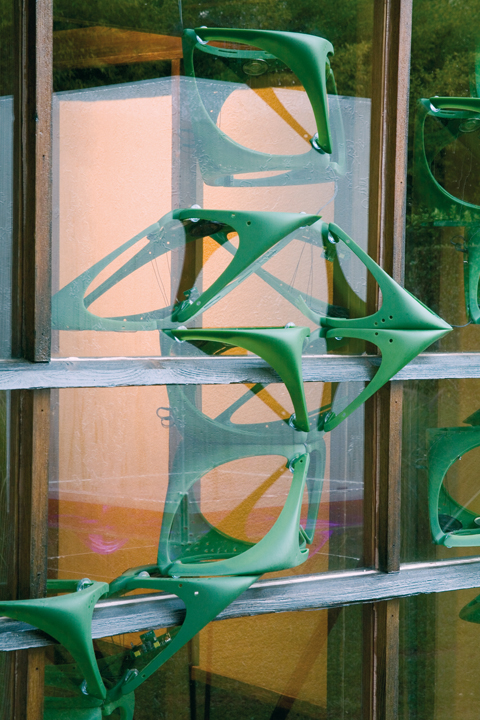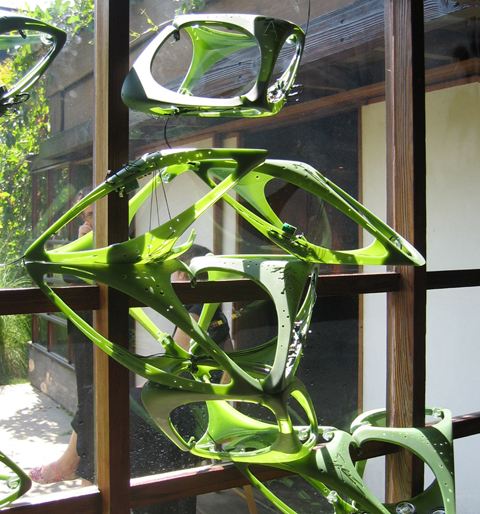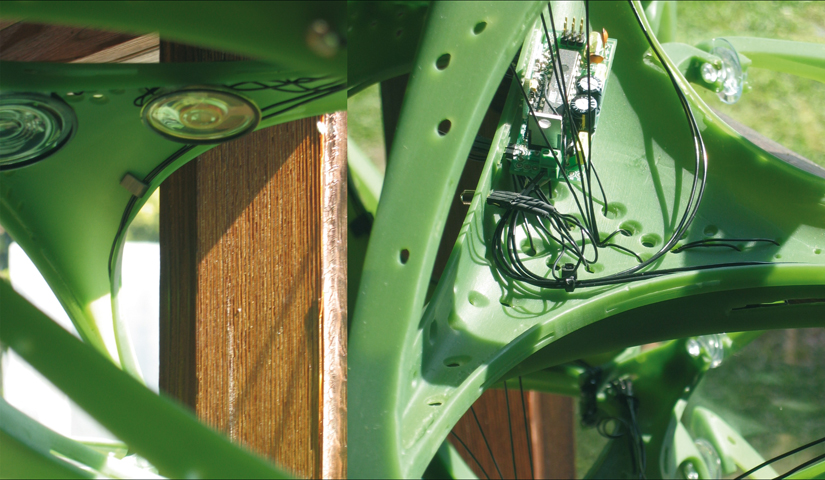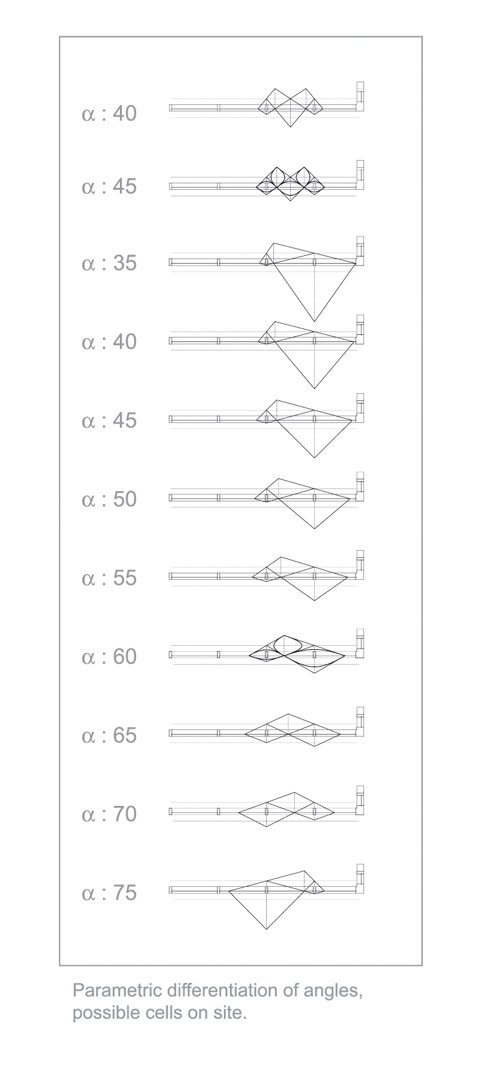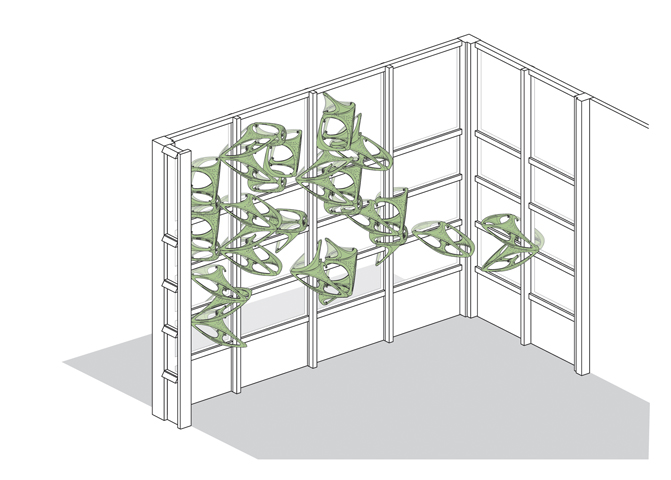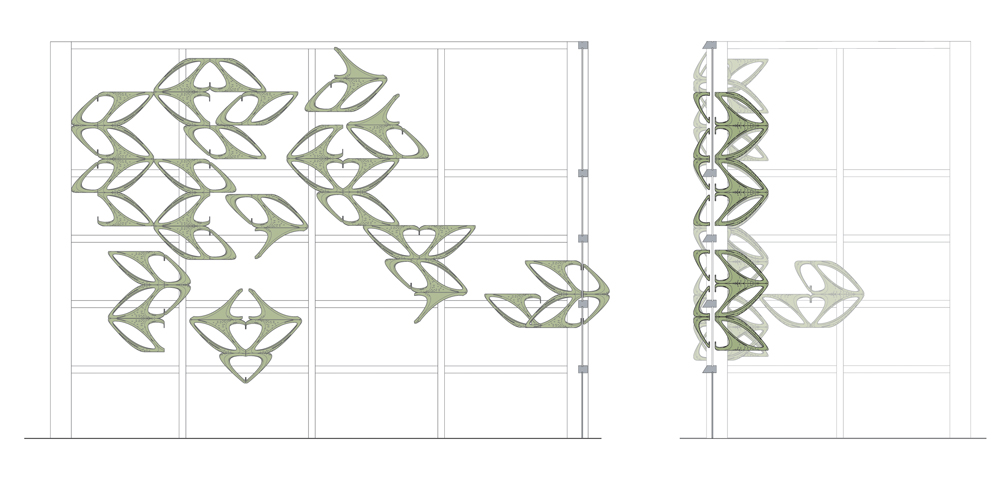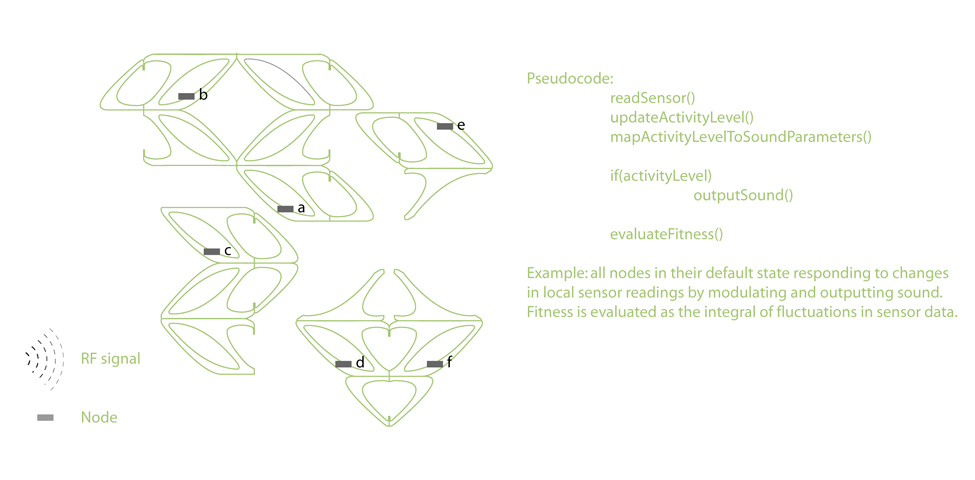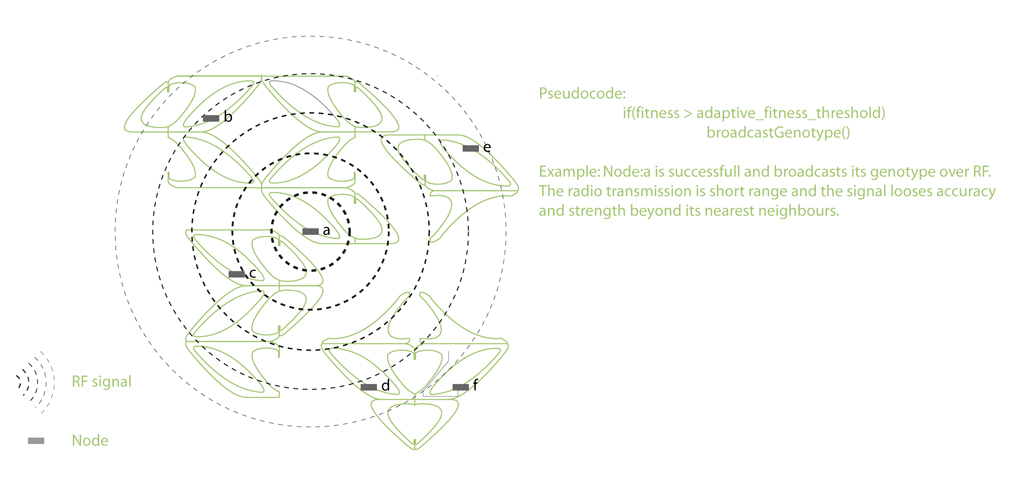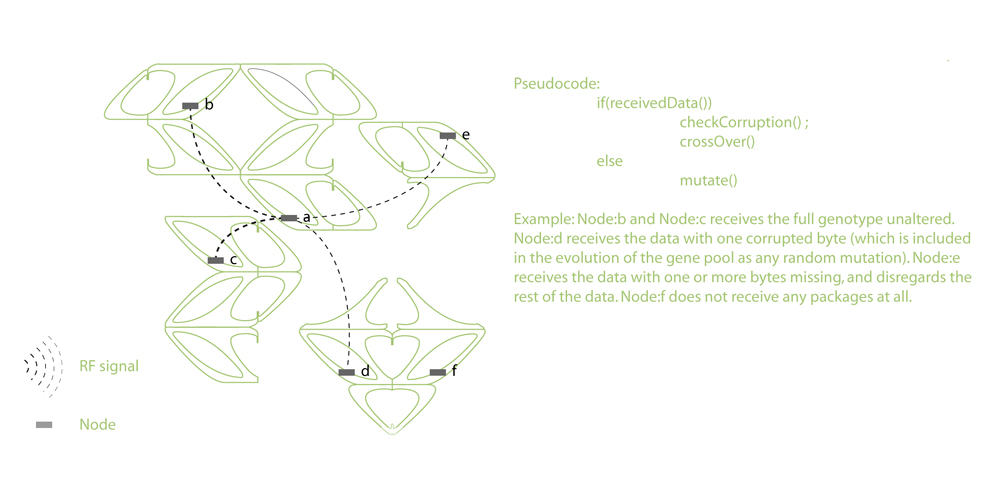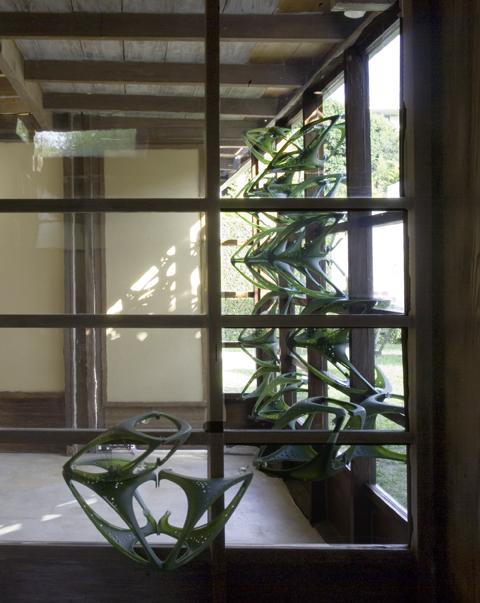Spoorg
Exhibition Design 2006-2008
Spoorg is a responsive electro-acoustic installation designed for the Gen(h)ome exhibition at the MAK Center for Art and Architecture in Los Angeles. Spoorg – semi porous operable organisms - takes its name from a primitive, usually unicellular, environmentally resistant, dormant or reproductive body produced by plants and some microorganisms. These microorganisms are capable of developing either directly or indirectly after fusion with another spore, producing a new individual which is, in some cases, unlike the parent. In the context of this project, each spoorg cell is embedded with local intelligence, enabling it to communicate with adjacent spoorgs. It is, to a specified degree, responsive to selected local and regional environmental changes. The spoorg aggregate is locally in fluctuation but also produces larger scale atmospheric effects in the specific region in which it is located. Materially, it is equal parts architecture, decoration, hardware, and software.
Spoorg is a cellular system that interfaces with the interior and exterior of glass building skins. The intelligence of the system is distributed, based on wireless radio communication. Spoorg reacts to local as well as regional environmental changes of light and responds by generating various forms of ambient sound. The behavior of each spoorg individually, and the network of spoorgs collectively, evolves over time through the modulation of sound textures based on a series of algorithmic rules. Each spoorg cell is comprised of a plastic shell with hollow regions for embedding local infrastructure such as PCBs (microcontrollers), photo transistors (sensors), small-scale speaker elements, and RF (wireless radio communications technology) for local communication between the cells. The shells are manufactured through sintering and vacuum-casting. The spoorg system allows one to cultivate and decorate domestic space (interior and exterior) by distributing and expanding shading and sound into a cellular, semi-porous membrane. Through this form of cultivation (the user’s interaction with the spoorg system) new behavioral patterns emerge. A lack of cultivation will result in a certain decay of the spoorg system’s performance. The difference between decay and growth renders the domestic space with subtle changes of atmospheric moods. Varying states of transparency emerge as the spoorg interfaces with natural lighting. Shifts in the density and the pace of ambient sound become apparent through the spoorgs modulations of frequency - generating pattern, lighting effects, and conditions of acoustic transparency or opacity - reshaping surfaces of the domestic interior.
Exhibition Design – servo >> Design Partners - Marcelyn Gow, Ulrika Karlsson, Chris Perry >> Design Team - Erik Hökby >> Electronic and Algorithmic Design >> Pablo Miranda and Åsmund Gamlesæter >> Sound Design >> Leif Jordansson and Martin Q Larsson >> Special Thanks - Jonas Barre, Sue Huang >> Funded by - Konstnärsnämnden, Sveriges Bildkonstnärsfond, Stiftelsen Framtidens Kultur, BSK arkitekter, White, Wingårdhs, Royal Institute of Technology (KTH), Atmel Norway AS >> Photography - Joshua White (images 1,2,4,17,22)



